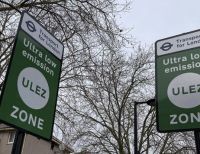Severe brain injury can leave individuals unable to respond to commands physically, but in some cases they are still able to activate areas of the brain that would ordinarily play a role in movement. This phenomenon is known as ‘cognitive motor dissociation’.
To determine what proportion of patients in so-called ‘disorders of consciousness’ experience this phenomenon – and help inform clinical practice – researchers across Europe and North America recruited a total of 353 adults with disorders of consciousness, including the largest cohort of 100 patients studied at Cambridge University Hospitals NHS Foundation Trust.
Participants had mostly sustained brain injury from severe trauma, strokes or interrupted oxygen supply to the brain after heart attacks. Most were living in specialised long-term care facilities and a few were living at home with extensive care packages. The median time from injury for the whole group was about eight months.
Researchers assessed patterns of brain activation among these patients using functional magnetic resonance imaging (fMRI) or electroencephalography (EEG). Subjects were asked to repeatedly imagine performing a motor activity (for example, “keep wiggling your toes”, “swinging your arm as if playing tennis”, “walking around your house from room to room”) for periods of 15 to 30 seconds separated by equal periods of rest. To be able to follow such instructions requires not only the understanding of and response to a simple spoken command, but also more complex thought processes including paying attention and remembering the command.
The results of the study are published today in the New England Journal of Medicine.
Dr Emmanuel Stamatakis from the Department of Clinical Neurosciences at the University of Cambridge said: “When a patient has sustained a severe brain injury, there are very important, and often difficult, decisions to be made by doctors and family members about their care. It’s vitally important that we are able to understand the extent to which their cognitive processes are still functioning by utilising all available technology.”
Among the 241 patients with a prolonged disorder of consciousness, who could not make any visible responses to bedside commands, one in four (25%) was able to perform cognitive tasks, producing the same patterns of brain activity recorded with EEG and/or fMRI that are seen in healthy subjects in response to the same instructions.
In the 112 patients who did demonstrate some motor responses to spoken commands at the bedside, 38% performed these complex cognitive tasks during fMRI or EEG. However, the majority of these patients (62%) did not demonstrate such brain activation. This counter-intuitive finding emphasises that the fMRI and EEG tasks require patients to have complex cognitive abilities such as short-term memory and sustained concentration, which are not required to the same extent for following bedside commands.
These findings are clinically very important for the assessment and management of the estimated 1,000 to 8,000 individuals in the UK in the vegetative state and 20,000 to 50,000 in a minimally conscious state. The detection of cognitive motor dissociation has been associated with more rapid recovery and better outcomes one year post injury, although the majority of such patients will remain significantly disabled, albeit with some making remarkable recoveries.
Dr Judith Allanson, Consultant in Neurorehabilitation, said: “A quarter of the patients who have been diagnosed as in a vegetative or minimally conscious state after detailed behavioural assessments by experienced clinicians, have been found to be able to imagine carrying out complex activities when specifically asked to, is sobering. This sobering fact suggests that some seemingly unconscious patients may be aware and possibly capable of significant participation in rehabilitation and communication with the support of appropriate technology.
“Just knowing that a patient has this ability to respond cognitively is a game changer in terms of the degree of engagement of caregivers and family members, referrals for specialist rehabilitation and best interest discussions about the continuation of life sustaining treatments.”
The researchers caution that care must be taken to ensure the findings are not misrepresented, pointing out, for example, that a negative fMRI/EEG result does not per se exclude cognitive motor dissociation as even some healthy volunteers do not show these responses.
Professor John Pickard, emeritus professorial Fellow of St Catharine's College, Cambridge, said: “Only positive results – in other words, where patients are able to perform complex cognitive processes – should be used to inform management of patients, which will require meticulous follow up involving specialist rehabilitation services.”
The team is calling for a network of research platforms to be established in the UK to enable multicentre studies to examine mechanisms of recovery, develop easier methods of assessment than task-based fMRI/EEG, and to design novel interventions to enhance recovery including drugs, brain stimulation and brain-computer interfaces.
The research reported here was primarily funded by the James S. McDonnell Foundation. The work in Cambridge was supported by the National Institute for Health and Care Research UK, MRC, Smith’s Charity, Evelyn Trust, CLAHRC ARC fellowship and the Stephen Erskine Fellowship (Queens’ College).
Reference
Bodien, YG et al. Cognitive Motor Dissociation in Disorders of Consciousness. NEJM; 14 Aug 2024; DOI: 10.1056/NEJMoa2400645
Adapted from a press release from Weill Cornell Medicine
















